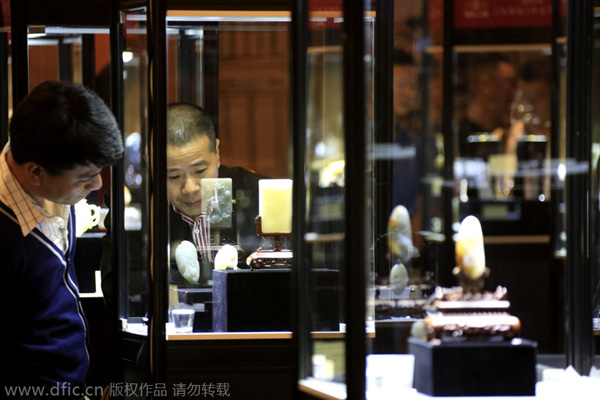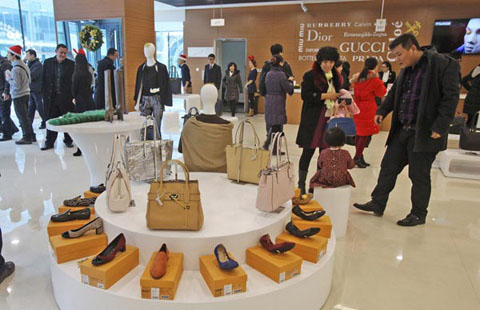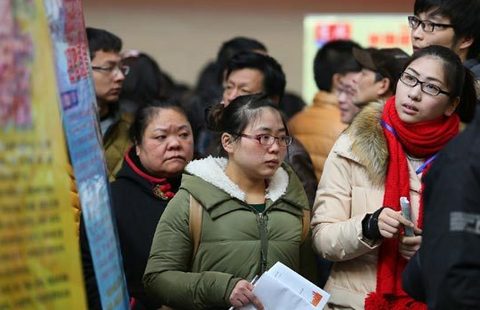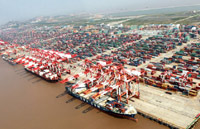Bengbu's jade industry on rocky road
By Zhu Lixin (China Daily) Updated: 2015-02-11 07:55
 |
|
Visitors examine jade artifacts at an exhibition in Hefei, Anhui province, in October. An anti-graft campaign launched by the central government, coupled with the global economic uncertainty, has greatly affected China's jade industry. [Photo/IC] |
Traditionally, Spring Festival is a time of good luck and prosperity, but global economic uncertainty and the government's crackdown on extravagant officials are making this a less-than-happy new year for retailers of the precious stone, as Zhu Lixin reports from Bengbu, Anhui province.
In Chinese, the word yu, or "jade", is often used to refer to the most beautiful and precious things. People who know the language well will recognize the word because it appears in many idiomatic old saws, usually those expressing wishes for prosperity and good luck.
"Almost as a part of our belief system, we Chinese think jade can bring us happiness and good luck, so love and pursuit of the magic stones has lasted for thousands of years", said Li Jiaxi, chairman of the Bengbu Jade Society.
In ancient times, jade was regarded as a symbol of admirable qualities, and only high-end or righteous characters were allowed to wear jewelry adorned with the stone, which was far beyond the price range of ordinary people.
Now, though, owning jade is no longer a privilege reserved for certain social classes. The development of the Chinese economy has helped the jade industry to grow rapidly since the 1990s, but in the past two or three years the sector has faced tremendous and unprecedented difficulties.
The downturn is primarily the result of two factors: an anti-graft campaign launched by the central government, and the global economic slowdown that has devastated many industries across the world.
As one of China's best-known jade-trading centers, Bengbu city in East China's Anhui province has witnessed the changes firsthand.
A citywide industry
It's estimated that there are about 4,000 to 6,000 jade businesses in Bengbu, but it's hard to tell because most are unlicensed and look like family workshops rather than centers of production.
- China to show its IT power in CeBIT 2015
- Patent dispute threatens Xiaomi's India future
- Joint 5G standards to be set
- Chinese premier sees innovation countering slowdown
- Interest rate cut more likely
- Cheaper scheme launched for imported cars
- China's outstanding social financing up 14.3% in 2014
- Qualcommgets $975m antitrust fine

















